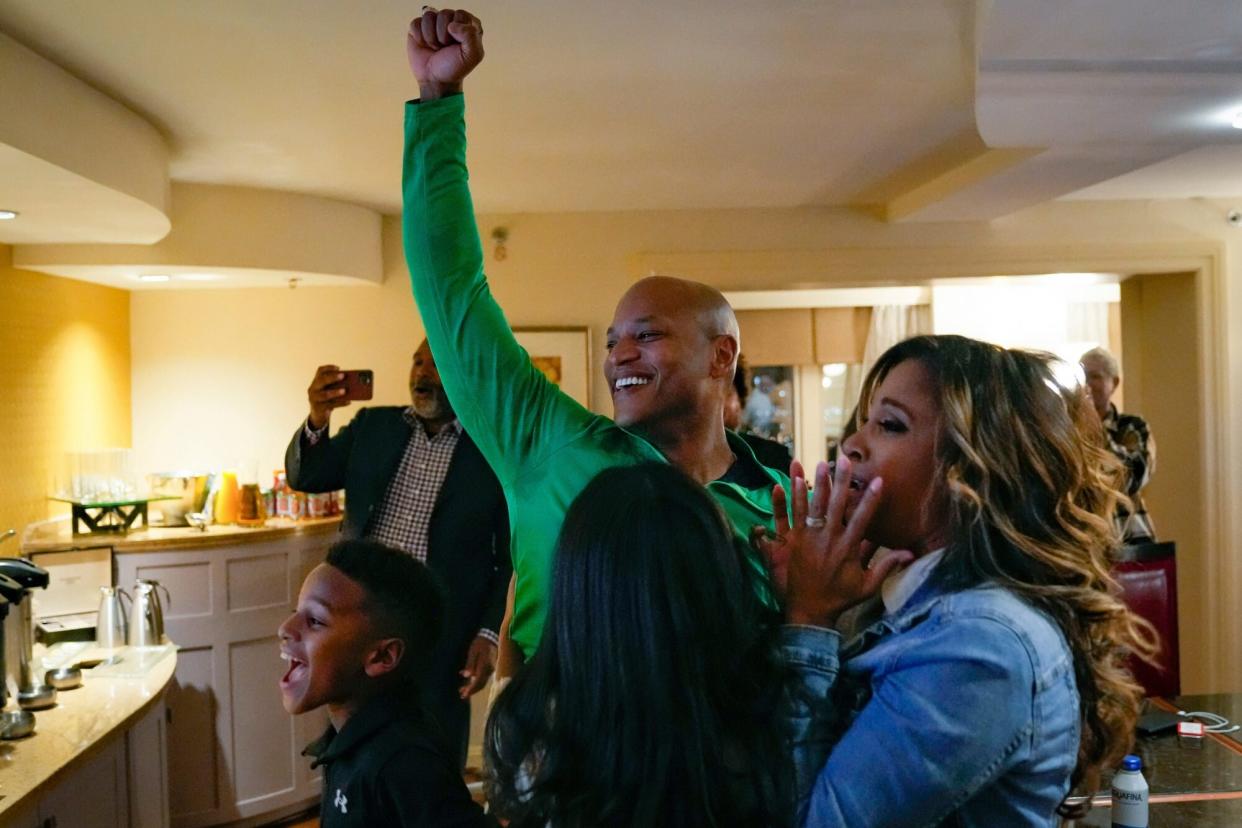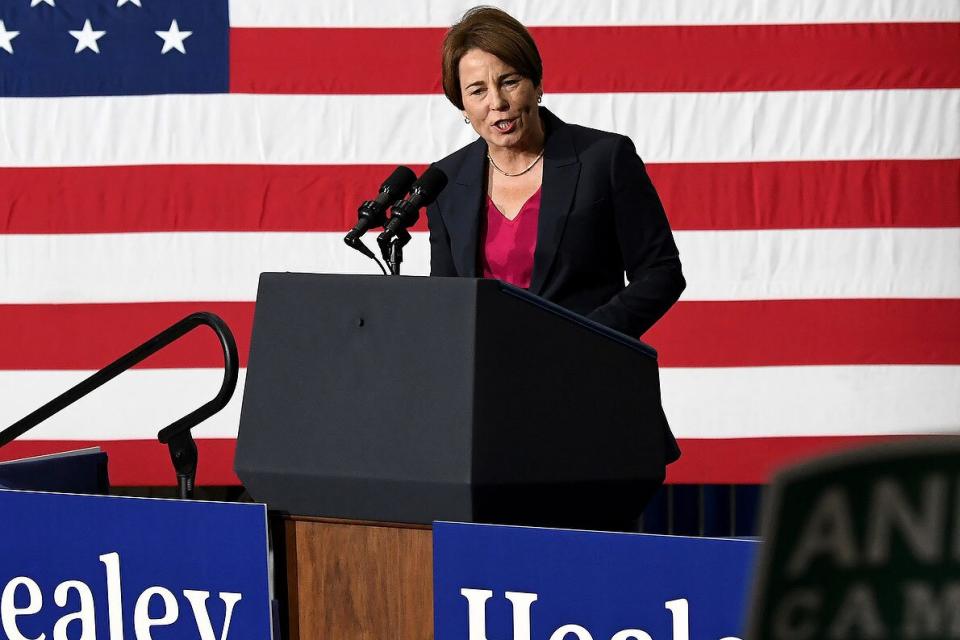Democrats Pick Up Governor Seats in Midterm Elections, Creating Nearly Even Party Split

AP Photo/Bryan Woolston
Democrats have a lot to celebrate coming out of the 2022 midterm elections, as the party fended off a red wave that polling — and history — warned was imminent.
Congressional races took the spotlight this year, with control of the House appearing to narrowly favor Republicans and control of the Senate staying with Democrats. But there were also prominent gubernatorial races, many of which featured starkly different candidates that put the nation's values to the test.
RELATED: Why 'Red State' and 'Blue State' Labels Don't Always Apply to Governor Races
Of the 36 gubernatorial races this year, four resulted in a seat flipping from red to blue, or vice versa.
In Massachusetts, Democrat Maura Healey soundly won her election and will succeed outgoing Republican Gov. Charlie Baker. In Maryland, Democrat Wes Moore was victorious in his bid to succeed outgoing Republican Gov. Larry Hogan. In Nevada, Republican Sheriff Joe Lombardo narrowly defeated incumbent Democratic Gov. Steve Sisolak. And in Arizona, Democrat Katie Hobbs won her hotly contested race to replace outgoing Republican Gov. Doug Ducey.
RELATED: Democrat Katie Hobbs Defeats Trump-Backed Kari Lake in Arizona Gubernatorial Race
Democratic incumbents Laura Kelly (Kansas), Tony Evers (Wisconsin), Gretchen Whitmer (Michigan), Michelle Lujan Grisham (New Mexico), and Kathy Hochul (New York) — who were all lumped in with Nevada Gov. Sisolak as at-risk Democrats — each defended their seats.
That means Democrats netted two seats in the midterm elections, bringing the party breakdown of governorships from 22 Democrats and 28 Republicans to a more even 24-26 split.
RELATED: Tina Kotek and Maura Healey Elected as America's First Openly Lesbian Governors

Mark Stockwell/EPA/Bloomberg via Getty Maura Healey
Though governors don't form a collective body, Democrats' feat of reducing Republicans' majority is significant: In a year that President Joe Biden's party was supposed to fail up and down the ballot, they massively over-performed.
Never miss a story — sign up for PEOPLE's free daily newsletter to stay up-to-date on the best of what PEOPLE has to offer.
Over the next four years, state governments will make key decisions surrounding reproductive rights, election processes and LGBTQ+ expression, to name a few. Each governor's party preference may directly impact how their state addresses those issues.
Additionally, the slight shift in favor of Democratic governors this year appears to be a sign that culture war candidates and election deniers are not the best path forward for Republicans in crucial swing states.

